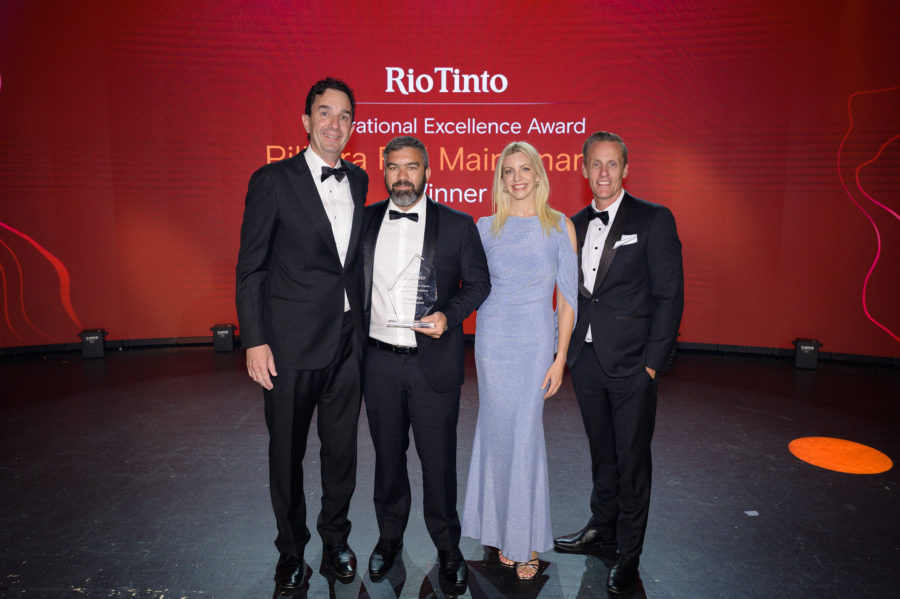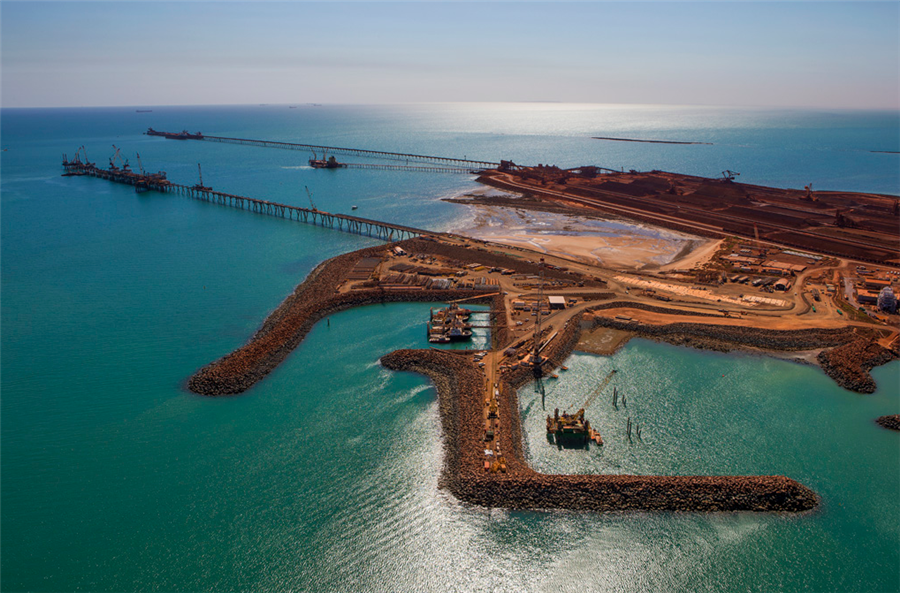Canaccord’s Joe Mazumdar shares his favorite get rich slow schemes
 Gold prices are down, but the prospects for fully funded development stories are up. In this interview with The Gold Report, Canaccord Genuity Analyst Joe Mazumdar shares the stories that are moving forward despite the downturn in commodity prices, and names some companies that could be the next takeover success stories.
Gold prices are down, but the prospects for fully funded development stories are up. In this interview with The Gold Report, Canaccord Genuity Analyst Joe Mazumdar shares the stories that are moving forward despite the downturn in commodity prices, and names some companies that could be the next takeover success stories.
The Gold Report: A strange thing happened over the last few months. The price of gold went down, but some of the junior mining equities are up. Can you explain what is going on?
Joe Mazumdar: Year-to-date gold is flat. But the Market Vectors Junior Gold Miners ETF (GDXJ:NYSE.MKT) is up 13%. Investors prefer owning the equity now rather than owning gold. This was not the case a couple of years ago when gold was going up to $1,900 an ounce ($1,900/oz) and far outperforming equities. Part of the reason was investors didn‘t believe gold could maintain that level, which suggests that equities were overvalued at the time. Now the overall thesis is that gold has bottomed and the equities are undervalued. We don’t believe all mining equities are undervalued, but there are some with management teams that can deliver the goods, whether it’s in exploration, development or production, and are seeing a premium for their projects that make sense.
The limited amount of capital in the sector is going to companies that can “tick all the boxes.” This is leading to kurtosis in the distribution of financing opportunities. The majority of companies don‘t have any means of attracting financing, while others are attracting more than they asked for.
TGR: Are you saying companies that are fully funded are, in a sense, immune to the gold price drop?
JM: Immune would be too strong a word. I would say companies that are fully funded to production such as Rubicon Minerals Corp. (RBY:NYSE.MKT; RMX:TSX), Roxgold Inc. (ROG:TSX.V), Asanko Gold Inc. (AKG:TSX; AKG:NYSE.MKT), Torex Gold Resources Inc. (TXG:TSX), Midway Gold Corp. (MDW:TSX.V; MDW:NYSE.MKT) and, potentially,Golden Queen Mining Co. Ltd. (GQM:TSX) are less susceptible to changes in their equity prices in the near term. The gold price doesn’t impact them as much as it does companies that have not financed themselves to production. These companies have managed to raise the funds to bring their respective development projects into production through various means including equity, offtake agreements, joint ventures and vanilla debt facilities with hedging components.
Funded developers are in good shape because the financing risk their competitors face is a positive for them, as it reduces the amount of stress on resources required to build and operate projects while lowering the risk of capital escalation. The lower stress on project development is also helped by the limited amount of significant greenfield projects to be built by majors, as they focus on near-mine, brownfield projects. We note that Gold Fields Ltd. (GFI:NYSE) has sold greenfield assets and reapplied those funds to brownfields projects and strengthening its balance sheet.
In our opinion, that makes it a great environment for those few that can attract financing to get a project into production because they are seeing limited capital escalation. They have access to better labor pools with the top people for engineering, procurement and construction management, and have a higher availability of contractors and equipment, generating lower lead times. In fact, many are actually squeezing the supply chain distributors for value.
The companies that don‘t have the money going into this kind of gold price environment will have to be patient. Some have just enough working capital to keep the lights on. But, in our opinion, investors should seek companies that are funded to generate significant catalysts going forward.
Another category is companies advanced exploration stories that are derisking projects through technical studies and permitting. This includes Orezone Gold Corporation (ORE:TSX) and Dalradian Resources Inc. (DNA:TSX).
Orezone will seek funds to develop its Bomboré open-pit, heap-leach gold project in Burkina Faso, West Africa, once it completes the feasibility study (Q4/14E) and acquires the exploitation permit (2015). The management team knows how to derisk a project and, in our opinion, would be able to attract financing because investors believe they can take the project to the next level.
Dalradian Resources is currently funded to complete a bulk tonnage sampling program at their high-grade, underground gold project (Curraghinalt) in Northern Ireland. The company recently closed an upsized and over-allotted equity financing for ~CA$27M, which will be used to advance the Curraghinalt project through permitting and a final project description to the end of 2016. We anticipate an updated scoping study prior to year end.
In comparison, Goldrock Mines Corp. (GRM:TSX.V) has a permitted project (Lindero) with a feasibility study, but has to contend with the significant geopolitical risk pervading Argentina. I‘m not saying it‘s impossible to fund the project’s development but, in our opinion, the potential financing avenues available for the company may be more limited and egregious than for a company working in a more manageable jurisdiction.
TGR: You mentioned Midway Gold. Do you want to talk about the competitive advantage there?
JM: We are talking about one of the few companies we cover that has a portfolio of development projects in a premier jurisdiction, Nevada. Some of the companies we cover have land packages that can potentially increase their resource base, but in Midway Gold‘s case, the company has a few projects at various stages of development. Pan is an open-pit, heap-leach project that‘s permitted and currently in development. The company has experienced some slippage on the timeline (one month), but it still believes the project can achieve its first gold pour by Q4/14. We have it slated for production by Q1/15 as an open-pit heap leach, initially run-of-mine, gold project. Eight kilometers away is the Gold Rock project, which is very similar and potentially higher grade. There are some synergies such as power and general and administrative (G&A) because it is close. That could allow the company to lower its production costs there.
Midway Gold’s other project is the Spring Valley joint venture, where Barrick Gold Corp. (ABX:TSX; ABX:NYSE) has earned a 70% interest. Barrick stated in its last presentation that getting Spring Valley to a feasibility study is a priority. This could be an attractive standalone project for Barrick in Nevada, where the company is placing a lot of emphasis. Midway Gold doesn‘t have to spend any more money to get the project into production. We believe prior to production at Spring Valley, Midway Gold may vend its interest in Spring Valley to Barrick Gold and use the funds to advance the Gold Rock project.
Terraco Gold Corp. (TEN:TSX.V) could also benefit from this scenario. Terraco has royalties on the northern part of the Spring Valley project, where the majority of the current resource lies. Having a senior producer such as Barrick as the developer is a positive for a company like Terraco.
TGR: What other companies that you‘re following have competitive advantages in the developer space?
JM: Golden Queen Mining has attracted strategic investors, including a New York merchant bank (Leucadia National Corp. LUK:NYSE) with a $9 billion market cap, to form a joint venture to develop the Soledad Mountain open-pit, heap-leach project in California. The joint venture partners wanted exposure to gold at the project level so it took 50% of the project for US$110M along with the Clay family, who are longtime supporters of Golden Queen Mining. A recent site visit indicates that the company is advancing its earth works in anticipation of further development work. The cash infusion will keep the project on its timeline to production.
The feasibility study at Soledad Mountain includes only 40% of the Measured and Indicated resource, so there is upside that can be converted later. The limitations aren’t geological, but land constraints under the permit boundary. The company is actively acquiring more ground to provide more space for leach pads and could extend the mine life. The mine life right now is 14–15 years, but the permit for the mining at site goes an additional 10–15 years. That leaves lots of time to work on amending the permit boundary. The company hasn‘t had an issue acquiring ground because it is next to a large wind farm that is not considered a desirable location to live.
TGR: What about companies that may need some funds to get into production, but have decent odds of succeeding?
JM: Castle Mountain Mining Co. Ltd. (CMM:TSX.V), similar to Golden Queen Mining, is working on an open-pit, heap-leach project in California. The difference is that this is not a new permit. The project was grandfathered, as Castle Mountain Mining was a former producer under Viceroy Resource Corp., which produced in the 1990s for about 10 years. In terms of derisking, there is a lot of data there. It is similar to having a gold bulk tonnage sample produced over 10 years. Investors have a good idea of about 50% of the ore that the company could extract and process based on how it performed previously.
Another issue is water, because the throughput rate at the old mine was much lower than envisioned today. The company is doing hydrological work to resolve that issue. The strip ratio is relatively high for its planned scenarios. If the company can increase the interpit slope angle, that could reduce the strip ratio, as well as the drilling program, and could convert more ounces to Indicated in the pit shells. We anticipate a feasibility study by Q1/15. That will be the next big catalyst. Like Golden Queen Mining, what Castle Mountain would like to do is eventually extend the permit boundary and extract more ore. Increasing the throughput is another upside opportunity.
TGR: Do you see Castle Mountain as a possible takeover target?
JM: Yes and we have modeled it as such. We modeled Golden Queen Mining, Asanko Gold and Midway Gold as life-of-mine concerns because we consider the management teams as production focused. Companies like Castle Mountain we consider more as takeout candidates once their projects are derisked, so we have modeled additional funding to arrive at steady-state production level, which is when we believe the project would be more attractive as a takeover candidate.
TGR: Speaking of mergers and acquisitions, one of the companies you mentioned on our Natural Resources Watchlist jumped more than 90% when it was taken out by a major. Tell me, what junior is ready for the next big buyout?
JM: Explorers of interest include Constantine Metal Resources Ltd. (CEM:TSX.V), which is advancing a polymetallic, volcanogenic massive sulphide (VMS) deposit in southeast Alaska that has attracted Dowa Metals and Mining Co. Ltd. as a joint venture partner. Dowa is earning a 49% stake in the Palmer project by funding US$22M of work over a four-year period. We recently completed a site visit to the project, which is located in a geological terrane that hosts a number of VMS deposits including Greens Creek and Windy Craggy.
Also of note is Calibre Mining Corp. (CXB:TSX.V), which has a project portfolio in Nicaragua. It has two joint ventures, one with IAMGOLD Corp. (IMG:TSX; IAG:NYSE) and the other with B2Gold Corp. (BTO:TSX; BGLPF:OTCQX), where both the producing companies are earning in by spending $5–6M over the next three years. The joint ventures provide a diverse pool of potential suitors and the company recently raised funds to explore the project that it owns 100% of.
TGR: Well, we will watch all of those get rich slow schemes together. Thank you for your time.
JM: Thank you.
Joe Mazumdar joined Canaccord Genuity in December 2012 from Haywood Securities, where he also was a senior mining analyst focused on the junior gold market. The majority of his experience is with industry including corporate roles as director of strategic planning, corporate development at Newmont in Denver and senior market analyst/trader at Phelps Dodge in Phoenix. Mazumdar worked in technical roles for IAMGold in Ecuador, North Minerals in Argentina/Chile and Peru, RTZ Mining and Exploration in Argentina and MIM Exploration and Mining in Queensland, Australia, among others. Mazumdar has a Bachelor of Science in geology from the University of Alberta, a Master of Science in geology and mining from James Cook University and a Master of Science in mineral economics from the Colorado School of Mines.
Want to read more Gold Report interviews like this? Sign up for our free e-newsletter, and you’ll learn when new articles have been published. To see recent interviews with industry analysts and commentators, visit our Streetwise Interviews page.
Source: JT Long
DISCLOSURE:
1) JT Long conducted this interview for Streetwise Reports LLC, publisher of The Gold Report, The Energy Report, The Life Sciences Report and The Mining Report, and provides services to Streetwise Reports as an employee. She owns, or her family owns, shares of the following companies mentioned in this interview: None.
2) Joe Mazumdar: I own, or my family owns, shares of the following companies mentioned in this interview: None. I personally am, or my family is, paid by the following companies mentioned in this interview: None. My company has no financial relationship with the companies mentioned: Dalradian Resources and Rubicon Minerals are investment banking clients of Canaccord Genuity. I was not paid by Streetwise Reports for participating in this interview. Comments and opinions expressed are my own comments and opinions. I determined and had final say over what companies would be included in the interview based on my research, understanding of the sector and interview theme. I had the opportunity to review the interview for accuracy as of the date of the interview and am responsible for the content of the interview.
3) The following companies mentioned in the interview are sponsors of Streetwise Reports: Terraco Gold Corp., Castle Mountain Mining Co. Ltd. and Asanko Gold Inc. Streetwise Reports does not accept stock in exchange for its services. The companies mentioned in this interview were not involved in any aspect of the interview preparation or post-interview editing so the expert can speak independently about the sector.
4) Interviews are edited for clarity. Streetwise Reports does not make editorial comments or change experts’ statements without their consent.
5) The interview does not constitute investment advice. Each reader is encouraged to consult with his or her individual financial professional and any action a reader takes as a result of information presented here is his or her own responsibility. By opening this page, each reader accepts and agrees to Streetwise Reports’ terms of use and full legal disclaimer.
6) From time to time, Streetwise Reports LLC and its directors, officers, employees or members of their families, as well as persons interviewed for articles and interviews on the site, may have a long or short position in securities mentioned. Directors, officers, employees or members of their families are prohibited from making purchases and/or sales of those securities in the open market or otherwise during the up-to-four-week interval from the time of the interview until after it publishes.
Streetwise – The Gold Report is Copyright © 2014 by Streetwise Reports LLC. All rights are reserved. Streetwise Reports LLC hereby grants an unrestricted license to use or disseminate this copyrighted material (i) only in whole (and always including this disclaimer), but (ii) never in part.
Streetwise Reports LLC does not guarantee the accuracy or thoroughness of the information reported.
More News
Pilbara Rail Maintenance wins operational excellence award at Rio Tinto supplier gala
April 15, 2025 | 05:07 pm
Rio Tinto posts lowest Q1 iron ore shipments since 2019, tempers forecast
April 15, 2025 | 03:55 pm
{{ commodity.name }}
{{ post.title }}
{{ post.date }}




Comments